State’s solar power increases by the day. Which Maryland counties lead the way?
Washington County once led the way for the state in solar energy primarily because of the solar panel farm the size of football fields off Route 65 in Hagerstown near the correctional institutions complex. Now, after nearly a decade of solar development, a proliferation of other installs, and one giant solar farm on the Eastern Shore, the Western Maryland county ranks second in utility-scale solar.
Great Bay Solar Project near Princess Anne on the Eastern Shore is the largest solar installation in the state, making Somerset County the leader in utility-scale solar. The project, which has its roots on former corn and soybean fields, started its development in 2016 and provides 75 megawatts of energy to the United States General Services Administration, or GSA.
Somerset County’s three utility-scale projects, including Great Bay, combine for a total of 79.8 megawatts, topping Washington County’s 11 utility-scale solar projects that produce 56.4 megawatts of energy. Frederick County and its six utility-scale projects rank third in the state with a capacity of 43.7 megawatts, according to data from the U.S. Energy Information Agency.
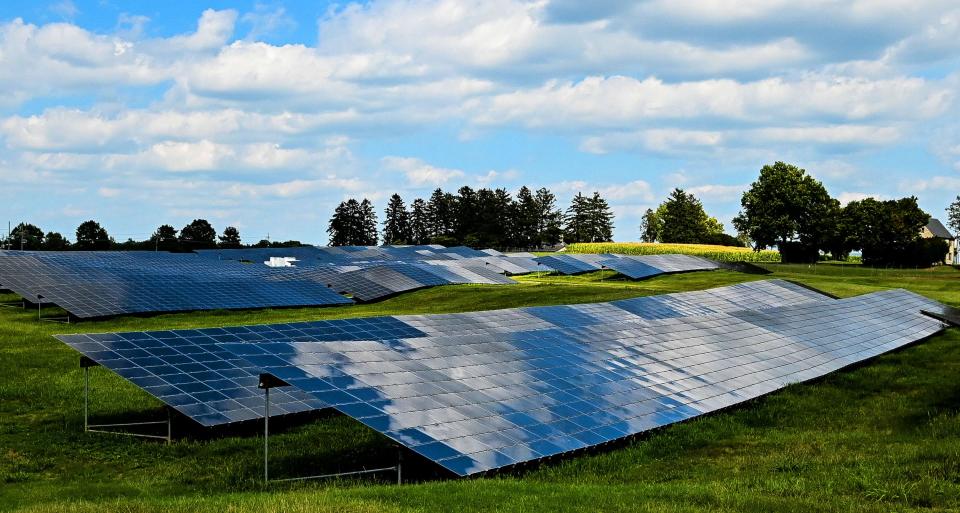
In the past decade, the state has gone from next to no solar installations of one megawatt or more (classified as utility-scale) to over 100 projects, producing a total of more than 400 megawatts a year. The state’s total solar generation capacity even rose slightly in the days while this article was being written.
According to the Solar Energy Industries Association, Maryland ranks 18th in the United States in solar energy and the output from solar installations powers 200,519 Maryland homes. But not all counties contribute to this generation of solar electricity equally.
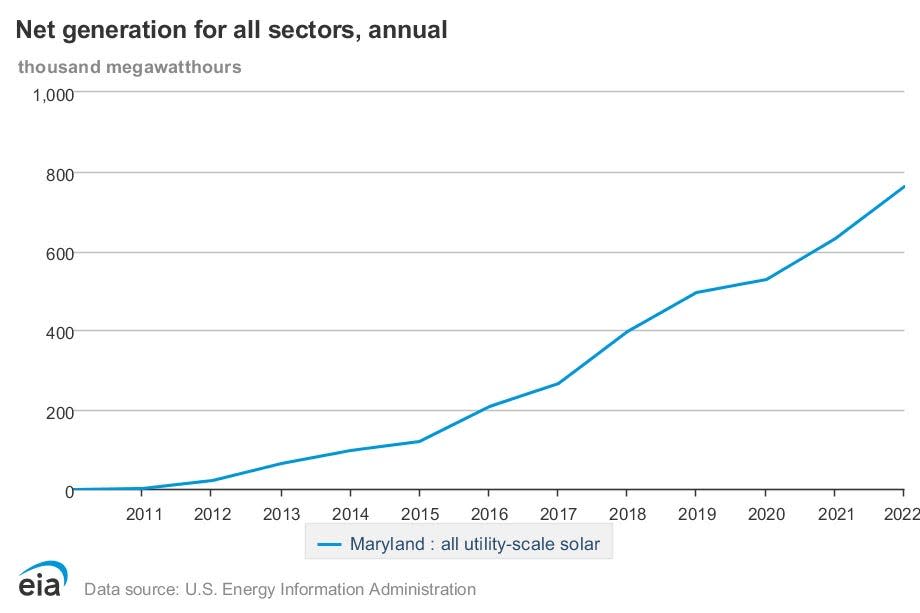
Which counties kick in utility-scale solar, and which don't?
Four counties (Allegany, Calvert, Caroline, and St. Mary’s) have no utility-scale solar, according to a map and data from the U.S. Energy Information Agency.
More: Q&A: Maryland expert talks climate change, wind energy and more before listening sessions
More than half of Maryland counties, including Somerset, have less than a handful of utility-scale projects. Talbot County on the Eastern Shore has just one project of 1.5 megawatts.
Baltimore City and Charles, Carroll, Garrett, and Worcester Counties each have two utility-scale projects a piece, but only Charles County’s contributes more than 10 megawatts total.
Dorchester, Somerset, and Wicomico Counties each have just three utility-scale projects, but each rank in the top 10 jurisdictions in terms of total solar output. In Salisbury, Perdue’s solar panels contribute one megawatt of energy, according to the U.S. Energy Information Agency.
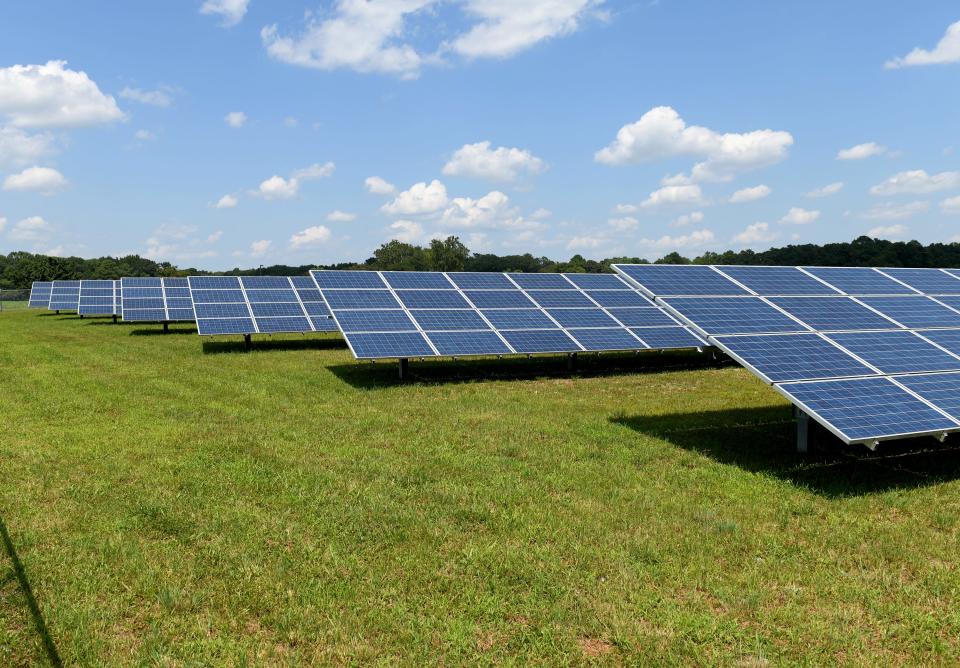
Salisbury’s Wicomico County has 16 megawatts total and Dorchester County produces 25 megawatts, including a 20 megawatt installation in Hurlock. Somerset’s 400-acre Great Bay project in Westover with its 300,000 panels helps get that county to nearly 80 megawatts.
RECAP: Somerset County solar farm rises
Anne Arundel and Cecil Counties both have four utility-scale projects a piece, with 16 and 6 total megawatts respectively, and Kent and Howard Counties both have five projects with neither jurisdiction’s projects adding up to more 12 megawatts.
Prince George’s, Harford, and Baltimore Counties are the only jurisdictions to have double digit projects like Washington County. Prince George’s leads the way with 16 installs followed by Harford and Baltimore counties with 14 each.
Each jurisdiction trails Washington County in terms of total output, however. Prince George’s County’s projects contribute a total of 31.7 megawatts, Harford County’s projects contribute a total of 26.8 megawatts, and Baltimore County's projects contribute a total of 19.6 megawatts.
Solar still a small part of total electric generation
Despite the proliferation of utility-scale solar projects across the state, solar power comprises only a small portion of the electric generation for the regional grid, PJM, which serves approximately 65 million people in 13 mid-Atlantic states and the District of Columbia.
“There are currently 20 solar projects in Maryland totaling 410 (megawatts)” on the PJM grid, according to Dan Lockwood, PJM spokesperson, in an email on August 11.
On Aug. 10, albeit a day that saw clouds in the Baltimore-Washington region, solar power accounted for only about 1% of generation, according to PJM’s website’s daily tracker.
About half of electric generation on the grid came from gas while less than 10 percent came from renewables like solar and wind sources.
In 2007, Maryland’s then-Gov. Martin O’Malley signed a law to require 2% of the state’s energy to come from solar sources by 2022. The Herald-Mail of Hagerstown reported in 2014 that the governor’s goal equated to about 1,200 megawatts of solar energy, citing the then-director of the Maryland Energy Administration.
While some days less than 2% of the generation on the regional grid is solar energy, Maryland has far exceeded O’Malley’s 1,200-megawatt goal, due in large part to individuals deciding to have solar panels installed on their home or business.
A Maryland Energy Administration spokesperson, using data from the regional grid operator, said 1,839 megawatts of solar energy were installed in the state as of the morning of Aug. 11.
RECAP: Washington County leads state in solar-energy capacity
Private solar power installs push past what utility-scale accomplishes
The U.S. Energy Information Agency shows 111 utility-scale solar projects in Maryland, but the regional grid operator’s data shows over 87,000 registered solar projects, including on homes.
Prince George’s County has the most total solar units installed with over 22,000, making its total nameplate capacity, or output under ideal conditions, the highest in the state. Over 220 megawatts are located in the D.C.-adjacent county.
Neighboring Montgomery County, the state’s most populous jurisdiction, has the next most solar units with over 14,000. It ranks No. 2 in total nameplate capacity with about 170 megawatts.
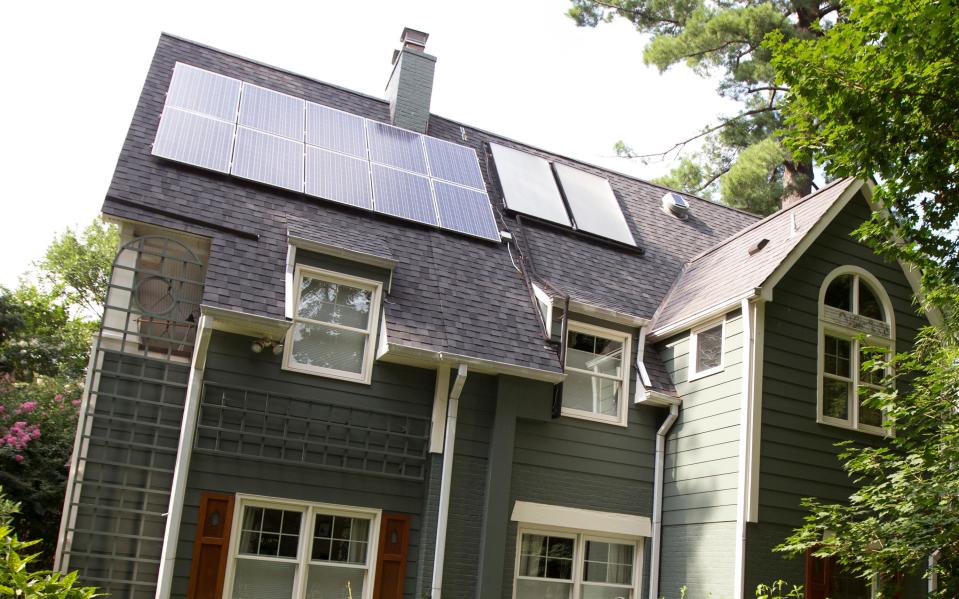
Anne Arundel County is the only other jurisdiction with more than 10,000 solar units. The county, which hosts the state’s capital, has a nameplate capacity of over 150 megawatts of solar energy.
With far less people, Somerset County ranks fourth in total nameplate capacity, mainly due to the size of its utility-scale projects. Just 336 units in the county account for 150-plus megawatts.
Washington County with 1,200 total solar units ranks eighth in terms of total energy output, with more than 90 megawatts of nameplate capacity. Most of that capacity comes from the 11 utility-scale projects in the county.
Federal and state tax credits for solar installations
The federal Inflation Reduction Act, passed last year, provides a tax credit of 30% for solar panel installation through at least 2025. An additional 10% credit is available for projects located in low-income communities.
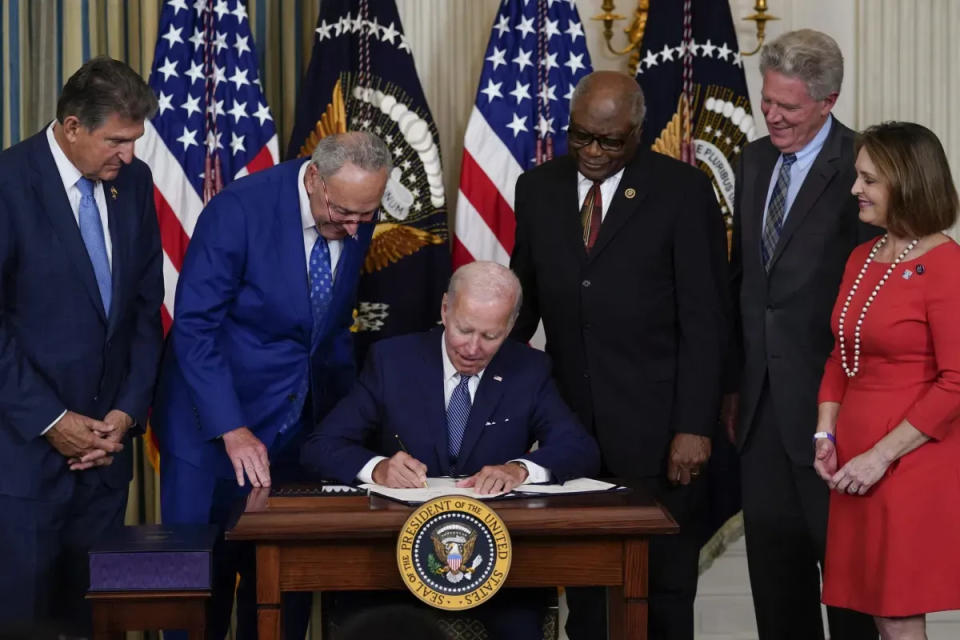
The state stopped accepting applications for its own Energy Storage Income tax credit earlier this month as funding diminished. Under a law enacted last year, Maryland may provide a total of $750,000 in tax credit certificates during a tax year for the installation of energy storage systems.
The program would have to be renewed by the General Assembly to extend past next year.
More: Maryland Department of the Environment meets to hear climate concerns
Dwight A. Weingarten is an investigative reporter, covering the Maryland State House and state issues. He can be reached at dweingarten@gannett.com or on Twitter at @DwightWeingart2.
This article originally appeared on Salisbury Daily Times: Somerset, Washington counties lead the way in utility-scale solar

